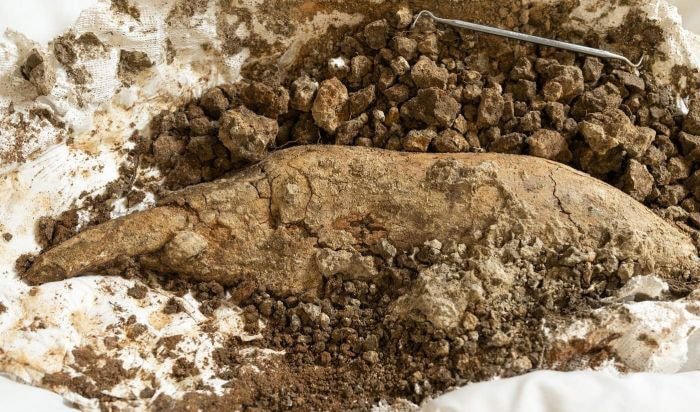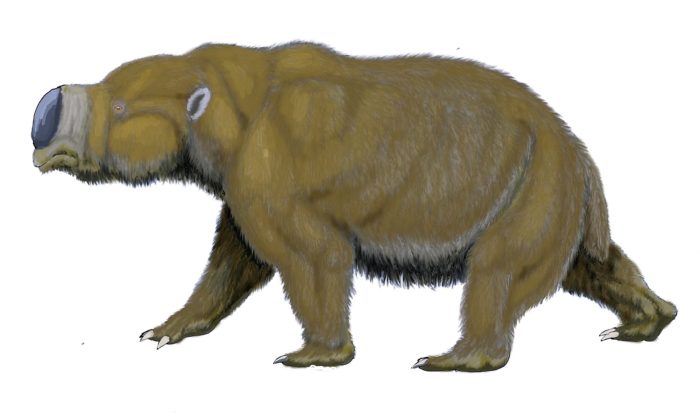Fossilised jaw of giant wombat discovered in NSW

The fossilised jaw of a juvenile diprotodon – a giant wombat species that lived thousands of years ago – has been discovered by palaeontologists in New South Wales.
Council workers from the Snowy Monaro region came across the fossil on Friday and alerted the Australian Museum in Sydney of the discovery.
The fossilised jaw was removed by AM curator and palaeontologist Matthew McCurry, who said that finding an entire jaw intact was extremely rare.
“We find a lot of adults, but also they’re mainly fragmentary – a lot of teeth or parts of jaws. Rarely do we find an entire jaw,” Matthew said.
“The fossil record is really quite incomplete, so very few animals turn into fossils and when they do, often they break up, and we only find little bits of them.
“Finding new fossils just gives us more of this complete picture about how things evolved — it’s just kind of piecing together bits of the story.”

Reconstruction. (Image credit: Dmitry Bogdanov /wikimedia)
Diprotodon was an ancient marsupial and is a distant relative of modern wombats and koalas.
It lived between 1.6 million and 45 thousand years ago and was massive: standing 1.8m tall, 3.5m in length and weighing three-tonnes.
Research published in 2017 found that diprotodons were a migratory species, which explains why their fossilised remains can be found all across Australia.
They are one of Australia’s better-known megafauna species – a group of large, ancient animals that once walked the continent, including large birds, marsupials and reptiles.
What caused the demise of Australia’s megafauna is still unknown, but hotly debated.
The Australian Museum will not display the fossil in the museum, but it will be available to researchers.

